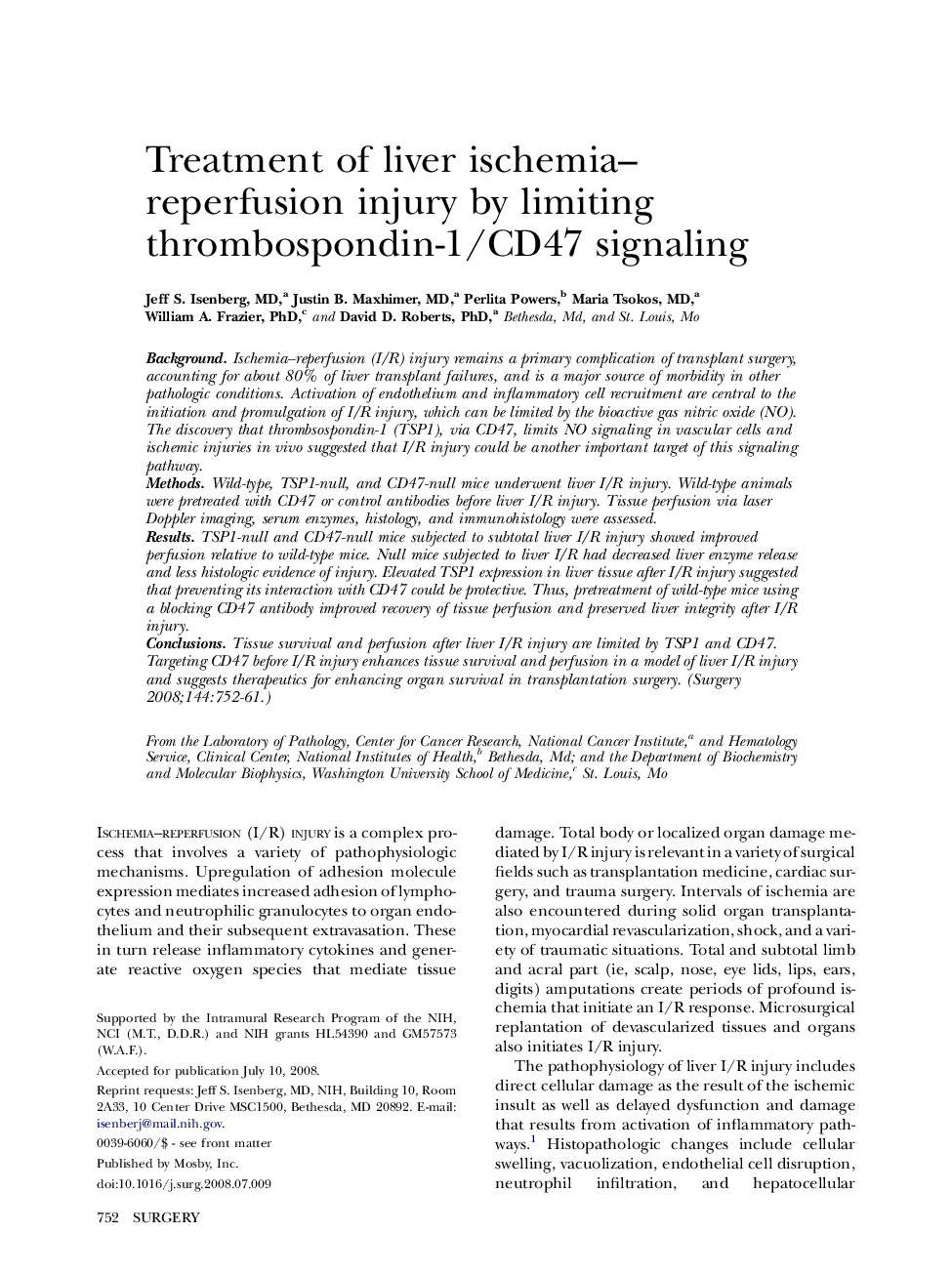| Article ID | Journal | Published Year | Pages | File Type |
|---|---|---|---|---|
| 4309674 | Surgery | 2008 | 10 Pages |
BackgroundIschemia–reperfusion (I/R) injury remains a primary complication of transplant surgery, accounting for about 80% of liver transplant failures, and is a major source of morbidity in other pathologic conditions. Activation of endothelium and inflammatory cell recruitment are central to the initiation and promulgation of I/R injury, which can be limited by the bioactive gas nitric oxide (NO). The discovery that thrombsospondin-1 (TSP1), via CD47, limits NO signaling in vascular cells and ischemic injuries in vivo suggested that I/R injury could be another important target of this signaling pathway.MethodsWild-type, TSP1-null, and CD47-null mice underwent liver I/R injury. Wild-type animals were pretreated with CD47 or control antibodies before liver I/R injury. Tissue perfusion via laser Doppler imaging, serum enzymes, histology, and immunohistology were assessed.ResultsTSP1-null and CD47-null mice subjected to subtotal liver I/R injury showed improved perfusion relative to wild-type mice. Null mice subjected to liver I/R had decreased liver enzyme release and less histologic evidence of injury. Elevated TSP1 expression in liver tissue after I/R injury suggested that preventing its interaction with CD47 could be protective. Thus, pretreatment of wild-type mice using a blocking CD47 antibody improved recovery of tissue perfusion and preserved liver integrity after I/R injury.ConclusionsTissue survival and perfusion after liver I/R injury are limited by TSP1 and CD47. Targeting CD47 before I/R injury enhances tissue survival and perfusion in a model of liver I/R injury and suggests therapeutics for enhancing organ survival in transplantation surgery.
